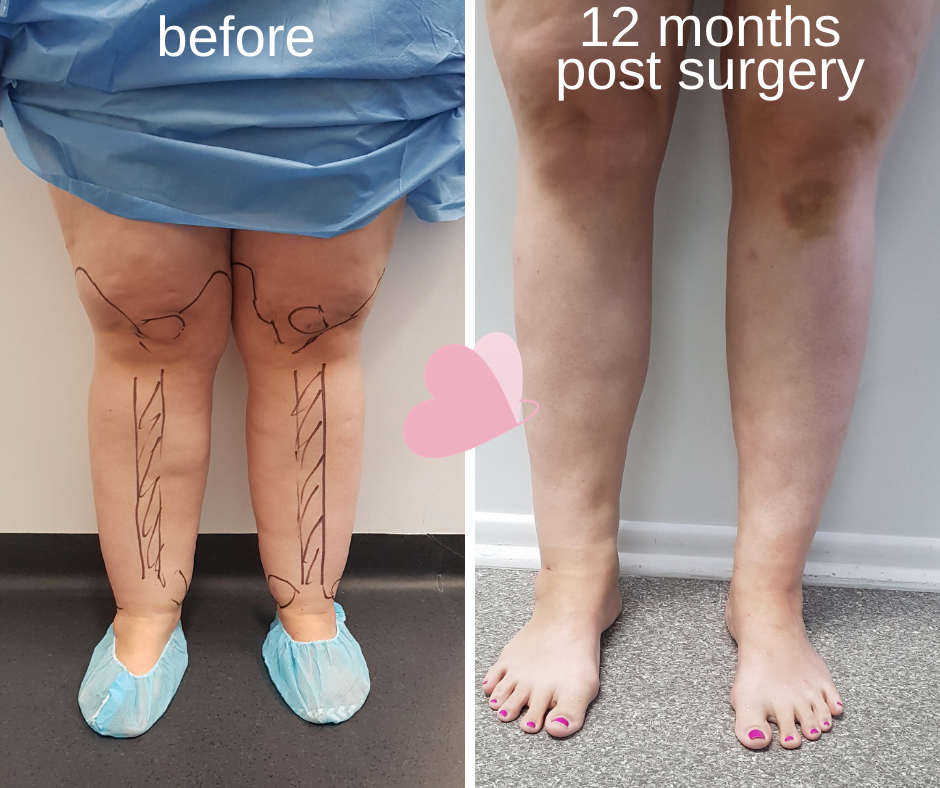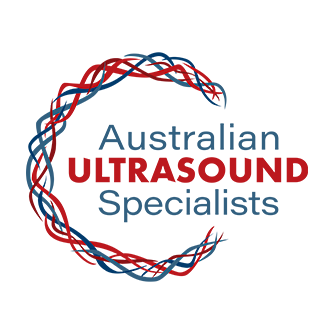Meet Mandy, a 57-year-old operations manager, from regional Victoria. Mandy says she first heard the term Lipoedema almost 30 years ago from a magazine article and thought “That’s exactly what I’ve got” however, she didn’t pursue a formal diagnosis until much later, due to having small children and a full schedule.
Mandy says she tried to manage her symptoms through diet, however, before the internet there was such limited information available. “I was told the same old story every time (by GPs) Mandy says, “eat less and exercise more.” “I don’t think healthcare professionals learn enough about it; my GP was interested to learn from me.” Over the years, Mandy says she has also tried many different weight loss drugs and injections, none of which were successful for her.
Mandy says she could never understand why her lower legs presented with excruciating pain if her children, while babies, climbed on her. She also experienced very ‘heavy legs’ and could never get jeans or boots to fit. After decades of hospitality and retail work, Mandy assumed the pain in her legs must have been due to varicose veins caused by being on her feet all day every day. However, following a vein stripping procedure in the early 2000’s, Mandy’s symptoms persisted.
As her Lipoedema progressed, Mandy began to find exercise a challenge. She also finds running around after her grandchildren tiring. “I still do it, but I’m just so sore afterwards.” Mandy says her mental health has also been impacted by Lipoedema, due to the way that she finds others to perceive her. “People think you don’t eat healthy and don’t exercise – and then as soon as you eat a sweet, they assume ‘Well that’s why you’re that size’.” As well as this, Mandy says the lack of aesthetic results became disheartening. “It’s tiring, mentally and physically, to be continually watching what you eat, how you eat, what you wear, how you exercise, when you exercise, with everything else going on in your life, it’s a full-time job”.
Mandy says her Lipoedema diagnosis didn’t come as a surprise because she had already essentially self-diagnosed. After receiving a formal diagnosis from Professor Richard Kennedy, in Geelong, Mandy then decided to pursue treatment at Lipoedema Surgical Solution, after coming across it on Instagram. “I’d had a consult with a plastic surgeon almost 28 years ago, and I didn’t feel comfortable with that style of invasive treatment, so at that time, I didn’t follow it up.” However, Mandy says she instantly felt comfortable with Dr Lekich, and resonated with his holistic approach to surgical treatment.
Mandy’s daughter also has a Lipoedema diagnosis, as well as her maternal grandmother, although she was never diagnosed. Mandy also recognises symptoms in her maternal aunties and cousins.
Mandy says over the last five years, as her education and awareness of Lipoedema has increased, she has been undertaking conservative management measures, which includes utilising flat knit compression garments, especially for exercise, following a ketogenic nutritional plan and exercising 4 x times a week, although Mandy says she finds walking difficult now due to the heaviness in her legs. Mandy is unable to access an MLD therapist in her area, so she undertakes Emmett therapy as part of her conservative management protocol.
Mandy says her goal for surgery is to reduce the diseased fat so that she’s not constantly in pain, and to live a relatively normal and healthy lifestyle again. “I don’t mind watching what I eat” Mandy says, “But it would be nice if it didn’t consume me 24 hours a day.”
In October 2023, utilising a protocol to manage underlying venous disease and a Lymph-Sparing technique, a total of 4.6L of Lipoedema fat was removed from Mandy’s lower legs by Dr Lekich.
Mandy described the first few weeks post-surgery as being ‘as expected’, however, she described experiencing more of a discomfort than a soreness – with pressure and tenderness. Mandy returned to work 2 weeks after surgery, and the gym at 5 weeks post-surgery, however, she identified that at 5 weeks post-surgery, she still wasn’t ready for the gym, so she decided to have another 2 weeks off and returned to her workouts at 7 weeks post-surgery.
The biggest challenge post-surgery for Mandy was pulling her flat knit compression on, as well as wearing compression in the summer heat. Mandy utilised Panadol and Nurofen for pain relief.
At 4 months post-surgery, Mandy reflected that although she felt lighter in her lower legs, she still is experiencing some tenderness, particularly around her knees, and interestingly, she feels even more inflammation in the areas of her body still affected by Lipoedema, that had not yet undergone surgery. However, Mandy also says: “The changes to the bottom of my legs are very evident, particularly in the ankle, shin and calf area.” Mandy continued “I don’t feel embarrassed to wear a knee-length dress anymore. People who don’t have the disease (Lipoedema) don’t understand the mental anguish, or what your perception of yourself is. It’s taken me quite some time to look in a mirror and think ‘that’s a huge difference’ because what you’ve seen for so long is still what you see, even though it’s not there anymore.”
In February 2024, Mandy subsequently underwent her second surgery, which resulted in a further 3.6 litres of diseased fat being removed from the posterior of her upper legs by Dr Lekich. During this surgery, Mandy also opted to undergo a Renuvion (skin laxity / redundancy) treatment.
Mandy shares her story in the hopes to raise awareness of Lipoedema. “Why should I be doing this at 57?” Mandy asks. “If I had known about conservative management options 30 years ago, I may have been able to hold (the Lipoedema) at bay, maybe my mental health would be better too.” Mandy goes on, “People think I’ve been to weight watchers and that didn’t work…maybe it’s me. Other people have lost that weight…why can’t I? Well, it’s because you have a condition. They (the medical community) recognise diabetes, Lipoedema needs to be recognised as a medical condition too.” Mandy wants other women with Lipoedema to have faith in themselves and be able to live their best lives. “Except for the financial burden, it’s amazing to be able to have this (option for surgery) locally in Australia. If other women have the option to be able to do it, I think it’s certainly worth considering, and doing, to make a difference in their lives to keep going.”
Read more about Mandy’s journey on her Instagram Page














